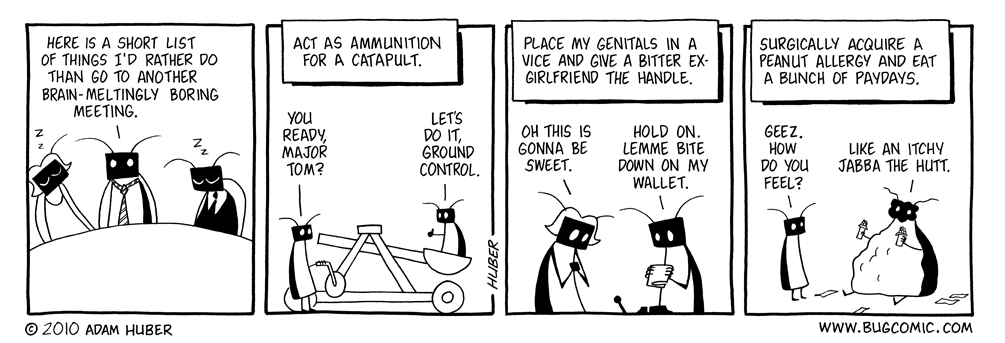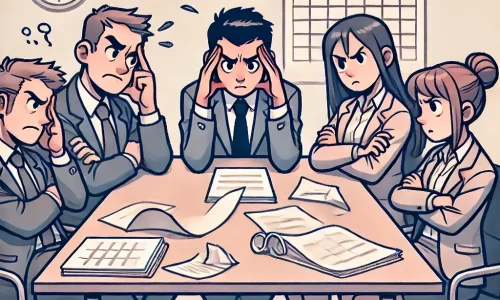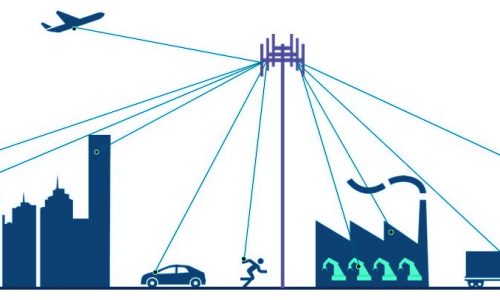I have an unpopular opinion. I love meetings. There I said it.
I get it, people hate meetings. But hear me out—when done right, they’re actually brilliant. Meetings are a space for dialogue. They encourage collaboration and cooperation. You can look somebody in the eye and get body language cues. You can interrogate ideas, dig deeper into data, and see things from different perspectives. Emails, instant messaging, and written reports just don’t offer the level of engagement that meetings provide.
But before we move on, let’s define what kind of meetings I’m talking about. Workshops, seminars, creative charrettes, site walks, inspections, performance reviews, crisis meetings, one-on-ones etc.. are not “meeting” in the context of this article. I’m referring to your run-of-the-mill project meetings, where you might invite a bunch of people in a meeting room for an hour, or two hours, following some sort of agenda, and with a bit of luck, decisions are being made.
There are reasons why people dislike these run-of-the-mill meetings. Most meetings are unfocused, go off-topic, or drag on way too long. You’ve got people playing on their phones, waiting for their turn to speak—or worse, waiting for the meeting to end—without any clear outcome. That’s a waste of everyone’s time.
But meetings don’t have to be a dreaded part of your day. They can be productive, engaging, and—dare I say it—fun, if you approach them with the right mindset.
Here’s the beautiful thing about meetings: If you’re the project manager and your meetings suck, it’s YOUR fault… and you can fix it! On the other hand, when reports and emails fail, there’s comparatively little you can do about it. With meetings, you have direct influence over the process. You set the agenda, manage the time, and guide the discussion. You are in charge!

Why People Hate Meetings
We have meetings to solve problems and make decisions through the exchange of information. That’s it. But very often, meetings fail miserably at this simple objective, and people hate them. There are six main reasons for this failure.
- Unnecessary Meetings: Meetings that actually serves no purpose.
- Unnecessary Attendees: Over-inviting.
- Waffling: Tangents and repetitive discussions that leads nowhere but to frustrations.
- Poor Time Management: Meetings that overrun.
- Fear of Confrontation: Anxiety about potential conflict can make people dread participating.
- Disruption of Work: Taking time out of for meetings interrupts workflow
Look.., there are no perfect meetings. But as the boss, you DO have significant influence over how meetings are conducted.
So let’s go…
Is your meeting even necessary?
This question is rarely asked. Research suggests that only 50% of meeting time is effective1. Recurring meetings are particularly susceptible to this. A useful meeting is one that has measurable outcome and actions. Project progress meetings is a stickler for this, where the teams get together to see how things are going. That is not a good use of people’s time if the meeting is a bunch of people telling you what a great job they are doing. People can update a tracker for this, no need for a meeting.
Don’t get me wrong, the project manager needs to know progress, and simply reading a Gantt chart just doesn’t quite cut it. You can gather intel about issues that you cannot uncover by reading numbers alone. But the progress bit should be swift and concise, and the majority of the time should be discussing issues, risks, solve problems and agree on actions. Remember, decisions and outcomes.
Make sure that your meeting has clear objectives and actions. If not, it is likely not necessary.
If you have regular information-sharing meetings, you should seriously reconsider. According to McKinsey, “Netflix requires that meetings involving one-way information sharing be cancelled in favor of other mechanisms like a memo, podcast, or vlog”2. This reduced meetings by more than 64%, and 85% of employees favor the approach. That’s not to say you can’t have briefings or other one-way information sharing meetings. But the goal should be to increase awareness of the information and to energise, rather than having a 1 hour briefing session that people end up filing the nails or playing Candy Crush.
Who needs to be there?
This is trickier than you might think. You don’t want to exclude people. Different perspectives are always useful. You want your team informed and involved. I have seen a team member feeling disgruntled for being excluded from meetings; but not to exclude but to not burden that person unnecessarily. However, not only over-inviting wastes the invitees’ time, but it can also diminish the quality of a meeting. This is particularly true for online meetings at the best of times. People can’t interject, can’t read body language cues. If your meeting has more than half a dozen people in it, then half of them probably won’t contribute in any meaningful ways.
Remember the purpose of a meeting? To solve problems and make decisions through the exchange of information. So your participants need to be able to contribute to this.
There are three essential participation roles:
- Decision makers – are the makers of key decisions, pertaining to the objectives of the meeting. This means that the person has the authority to “disagree and commit”.
- Subject matter expert – who have specialist knowledge or a significant stake in the decisions outcome.
- Executioners – those who are accountable for the execution of the decisions, who can provide useful insights.
These people should be in the meeting. If they can’t, make sure they deputise, otherwise, you should consider rescheduling the meeting, as it will likely be inconclusive with no meaningful outcomes.
Now.., there is no one size fits all. Depending on your team dynamics and your leadership style, you can invite the wider team at your discretion. If an attendee doesn’t contribute and have no meaningful outcomes, then you should consider relieving them from the burden.
Get a Clock!

Really.., get a clock. The bigger the better.
Good meeting time management is the make-or-break for effective meetings. If you excel at having concise and impactful 15 or 30 minutes meetings, then you can afford to over invite. In fact, that might not be a bad thing (in moderation), as it keeps your team involved and informed without over-burdening them.
Objectives
This is sooo cliche. But how often when you go into and leave a meeting without knowing the point of the meeting?
“But how do you define objectives in my weekly progress meetings? I just want to know what’s going on.” I hear you ask.
Remember, your objectives in your progress meetings is to gather intel to identify issues, risks and to make decisions and agree on actions. If everything is going swimmingly, then your progress meeting should be 10 minutes. And that’s fine. You team knows what to do, and there are no problems for you to solve. But that’s never the case. You need to be clear about what you and your team need to get out of the meeting and facilitate the conversations accordingly. This is further discussed below.
Agenda
This is alsooo cliche. I would say that if you excel at running concise meetings, having a formal agenda printed is probably not necessary. But you should have an agenda in your back pocket to help you stay on track. The likelihood is that you will have some kind of action follow-up check list from your previous meetings.
Facilitator mind set
If you are calling the meeting, then you need to adopt a facilitator mind set. Having clear objectives and agenda would be the first steps. But it is up to you to chair and control the meeting. This takes confidences AND practice. However, here are a couple of things to bear in mind.
- If you are not sticking to the agenda, then you are not doing a good job at facilitating. This should the first cue…. Yes, things can change, but I’d argue that you should ALWAYS stick to the agenda, regardless to what’s happening in the meeting. If you deviate, the likelihood is that your objectives are not being met.
- If you notice any member of your team disengaged, this is the second cue.
- If one person is doing all the talking, this is your third cue.
Facilitation is a skill. And here are nine things you can do or consider to help you.
- Do your homework. This enables you to ask intelligent question and not allow your team to run your meetings. I have seen far too many project meetings, where the team talks extensively about how great a job they are doing, or what problems they have solved. These are interesting things to talk about over a beer. But not in a progress meeting. As the PM, you need to identify issues and risks. More than likely, there will be actions for you, as the PM, to solve problems that your team cannot. Doing your homework means visiting site, speaking to your team, speaking to your client, and speaking to 3rd party subcontractors outside of your progress meeting to get a complete picture as to what is happening and where the bottlenecks are likely to be.
- Distribute your objectives and agenda ahead of time. Attach this to the calendar invite. Executives and consultants usually do this. But project teams almost never do. Some people might not even read them. It’s up to you to set the expectation that they do, and this simple action helps enforce structure. By doing so, you’re setting an example and creating a culture of preparedness, which will naturally influence people’s behavior over time.
- State the rules: Clarify your meeting rules at the beginning of every meeting, e.g. the objectives, the agenda, time keeping, no cell phones etc… This will help you set the tone and stay in control. This doesn’t have to be, and shouldn’t be, a long speech, especially if the meetings are frequent. But you should set the scene. The simple gesture of making a point of starting on time, rather than saying “we’ll just wait for so and so” will encourage your team to turn up on time.
- Parking Lot: Use parking lot as a technique to move on from off-topic discussions. This involves interrupting the conversation, and writing the topics down on a corner of the white board. By doing so, you are moving the conversation forward, while not diminishing the importance of the conversation. You can always come back to it at the end or at a later date. You will find that 9 times of 10, once the adrenalin is over, it’s no longer important.
- Encourage balanced participation. Remember, there are reasons why you invite a person to a meeting. This is easier with smaller groups, say less than half a dozen. A simple thing you can do, is that whenever a new member joins a meeting, get that person to introduce himself or herself. That helps open up the newcomer to participation. Remember, you’re the host and it’s your party.
- Read the room. Periodically, take a step back from the discussion to read the room and adjust your line of facilitation.
- Don’t over engage. Remember, you are the facilitator. Don’t get too vested in any debates. You should be asking questions, listening and not spend time justifying yourself.
- Disagree and commit. If you can’t come to any consensus, you have a decision to make. Do you a) schedule another meeting, or b) disagree and commit? The latter means that the decision maker makes the decision and the team commits. The commitment needs to be from the team, and as the project manager, you need to remind people of this. As Steve Jobs said back in 1991 “Mistakes will be made. That’s good, because decisions are being made.” If you make an unpopular decision, you have to own it. And at the same time, your team has to have your back. Similar, if you deputise a decision, then you need to support the decision, regardless of outcome.
- Take notes. This should be a given. Your assistant or your deputy can do this. It is important to take good detailed notes to include issues, risks, decisions, actions (with ownership), that you can follow up. Circulate the minutes within the hour if possible. I have seen some very good project managers who don’t take notes, or have notes taken on their behalf. My view is that this is a very dangerous game to play. Keeping good records is important, and if there are any miscommunication, minutes or notes provide an opportunity to rectify them.
25 Minutes
Short meetings are (almost) never a waste of time. Long meetings are (almost) always a waste of time.
I have a challenge for you, from now on, only set 25 minutes (or shorter) meetings. In Outlook, the default meeting length is 30 minutes, so that should help!
25 minutes means starting on time, and finishing 5 minutes before a 30 minute allotted calendar invite duration.
I guarantee, if you do this and follow 50% of the recommendations in this article, your meetings will be infinitely more productive and efficient.
“But my team is always late!”
Well…, you’re the boss, you need to enforce timeliness. As mentioned previously, the simple gesture of making a point of starting on time will influence your team to turn up on time. But if you keep waiting for people to show up, then they will always be five minutes late.
“25 minutes is too short, it will overrun.”
Not if you stick the script and get good at it. Sure…, it could happen…, and don’t beat yourself up when it does, but recognise that if meetings consistently overrun, you need to facilitate the meeting more effectively.
“It feels rushed!”
Yes, and it should feel “rushed”. Meetings aren’t the place for waffling, whining and endless debates. If the conversation isn’t productive, move on. Stick to the agenda, and you’ll quickly see how much time was being wasted. As the facilitator, you can interject and park conversations. For deeper issues that require a thorough deep dive, set up a dedicated working session. This isn’t just “another meeting,” it’s time specifically set aside for problem-solving, more akin to a workshop than a meeting, where you and your team bring data into your war room; you roll your sleeves up to really dig deep.
Remember, people almost never complain about meetings being rushed.
Final Thoughts
Bad meetings are all too common, but just because some meetings go off the rails doesn’t mean they’re all a waste of time. Meetings encourage dialogue and collaboration. If you can implement some of the recommendations outlined, like setting clear objectives and adopt good facilitation habits to keep topics and time in check, meetings can be a powerful tool for gathering information, solving problems, and making decisions.
And remember, if your meetings suck, it’s your fault, and go fix it.












